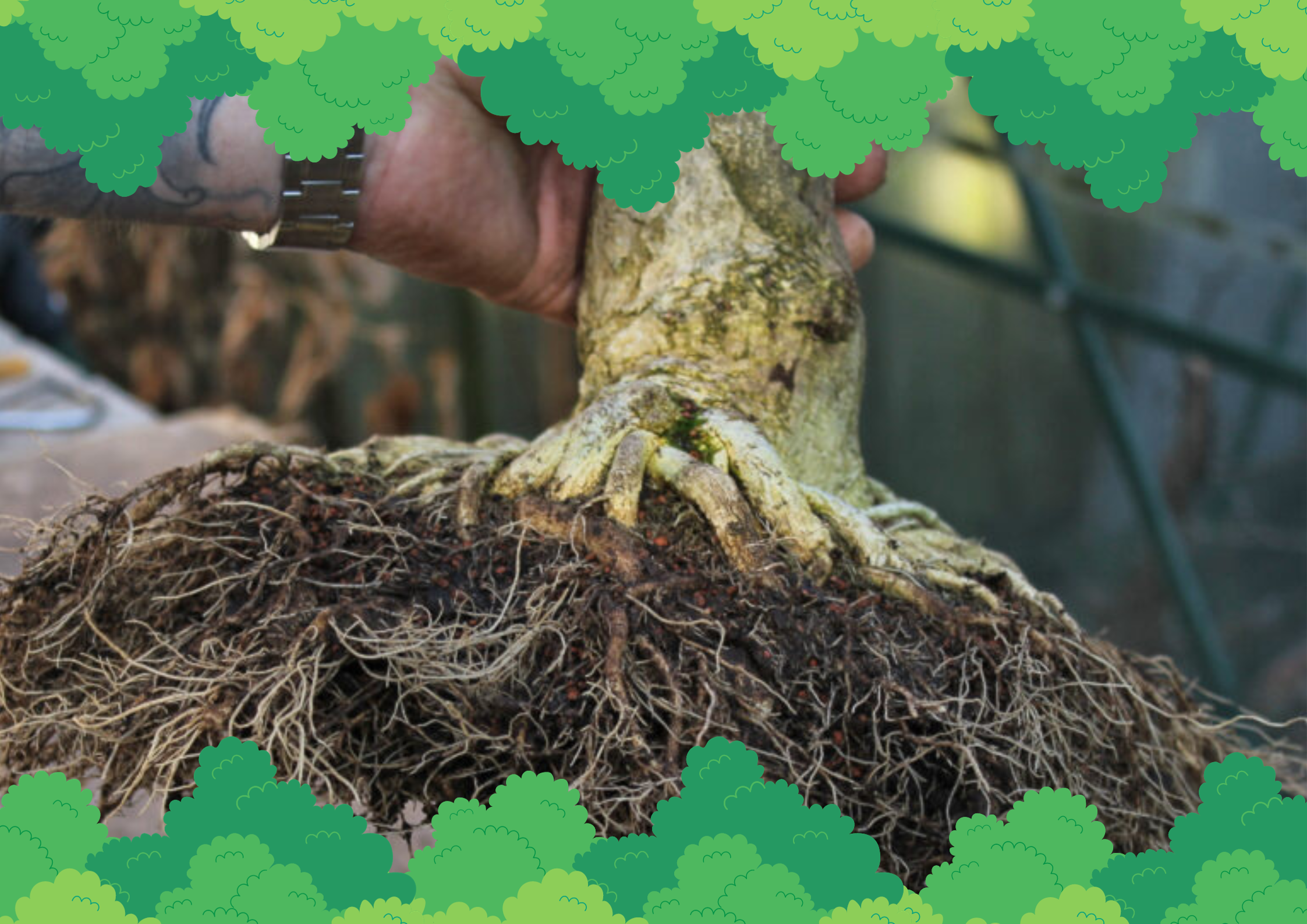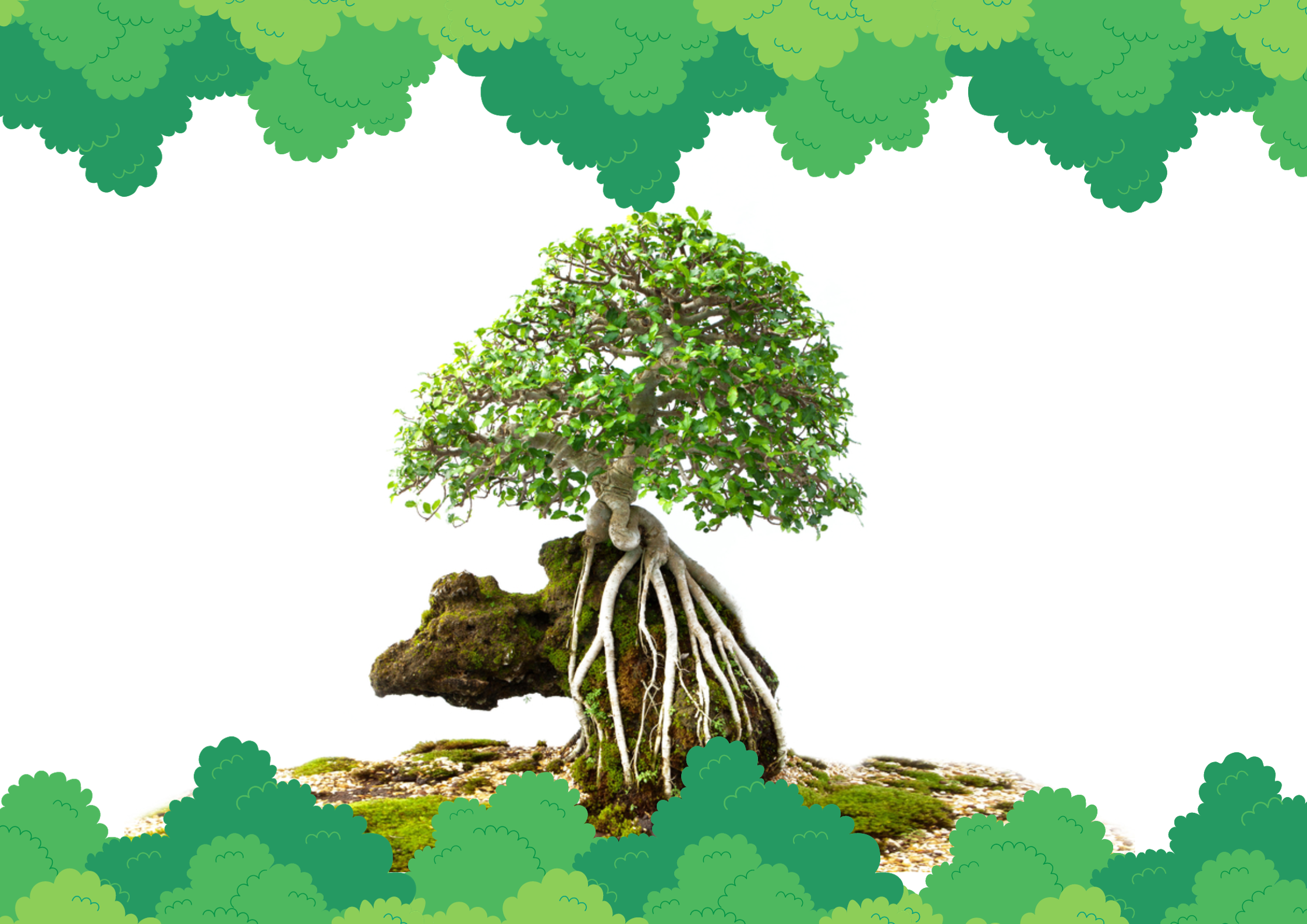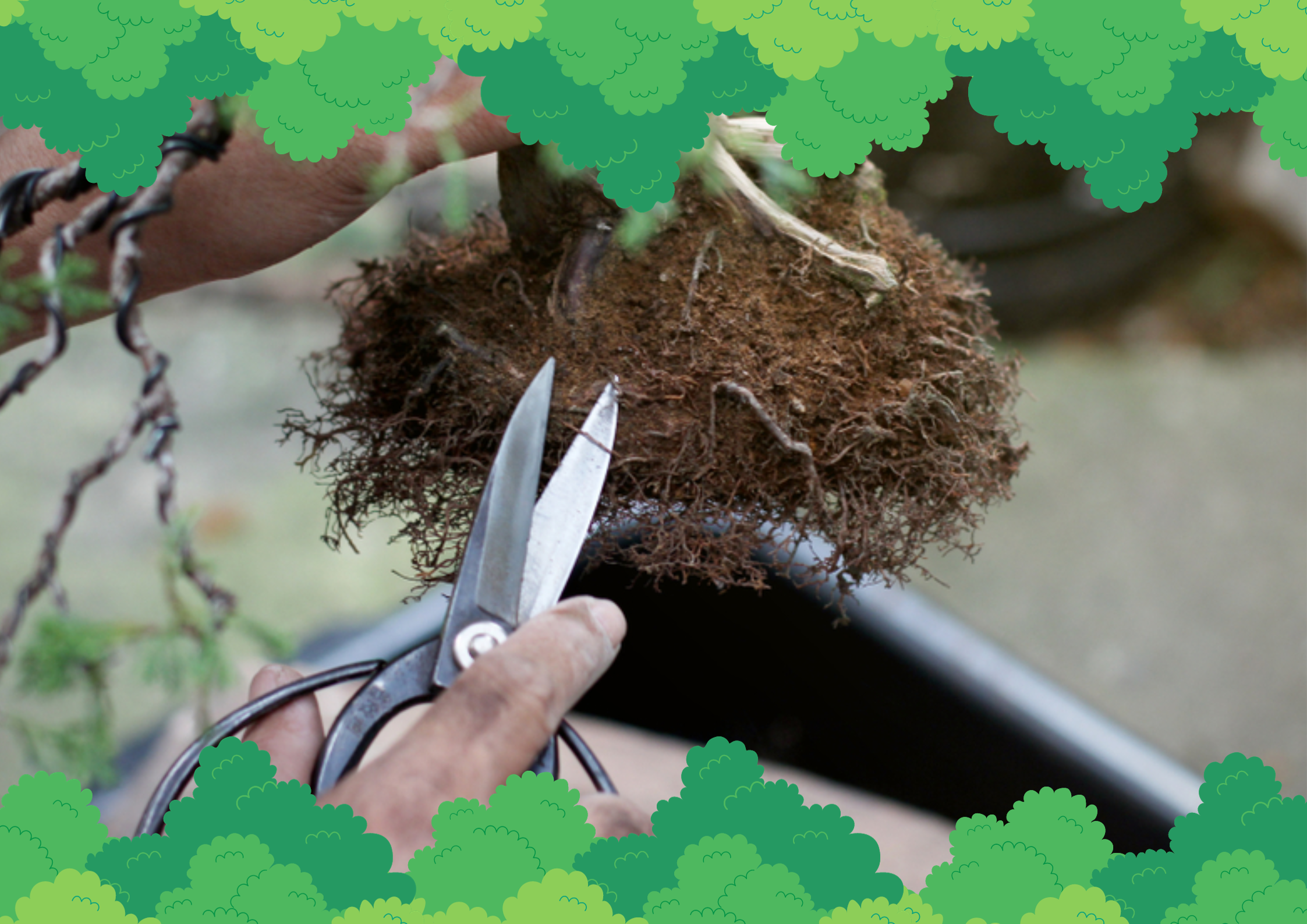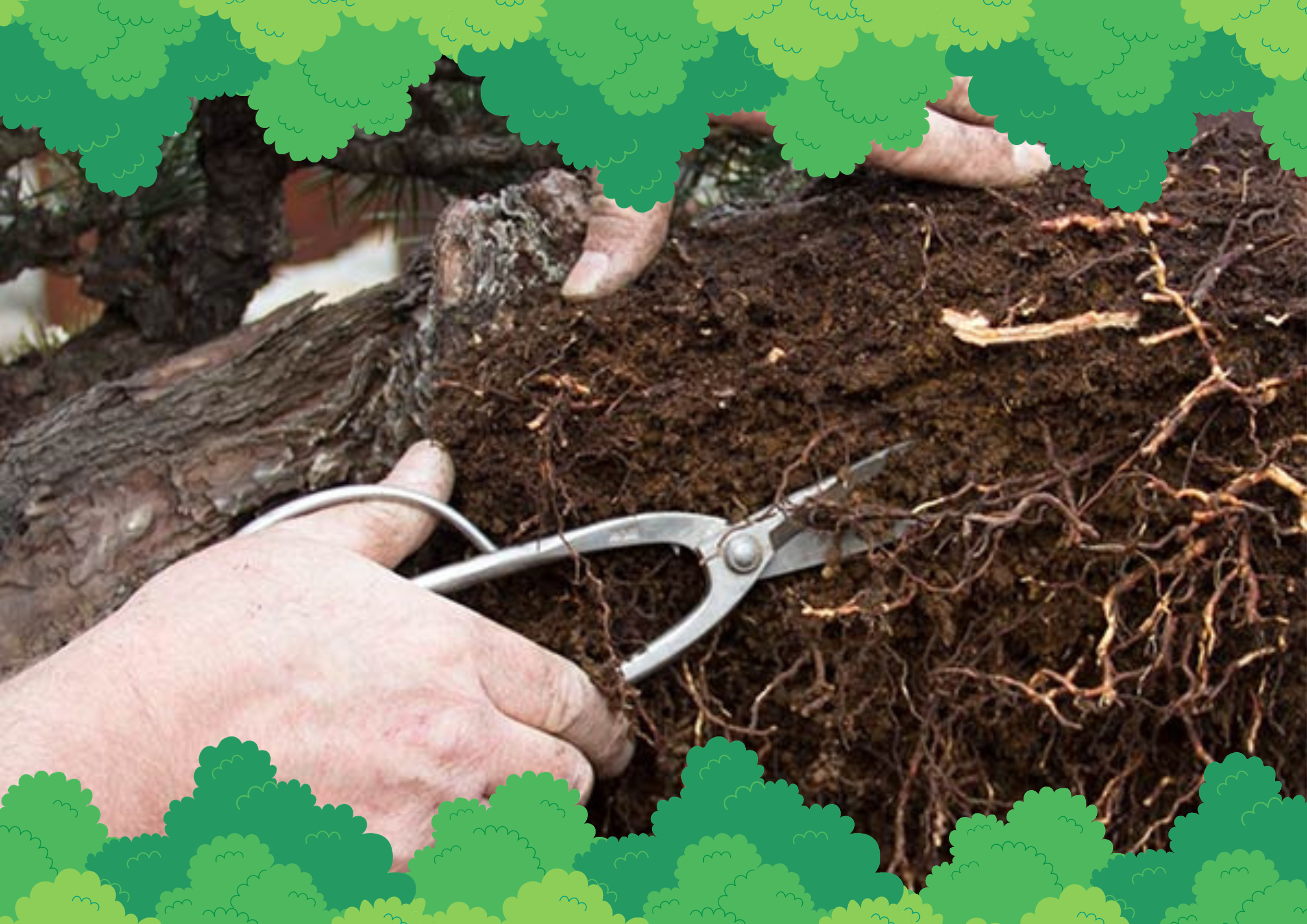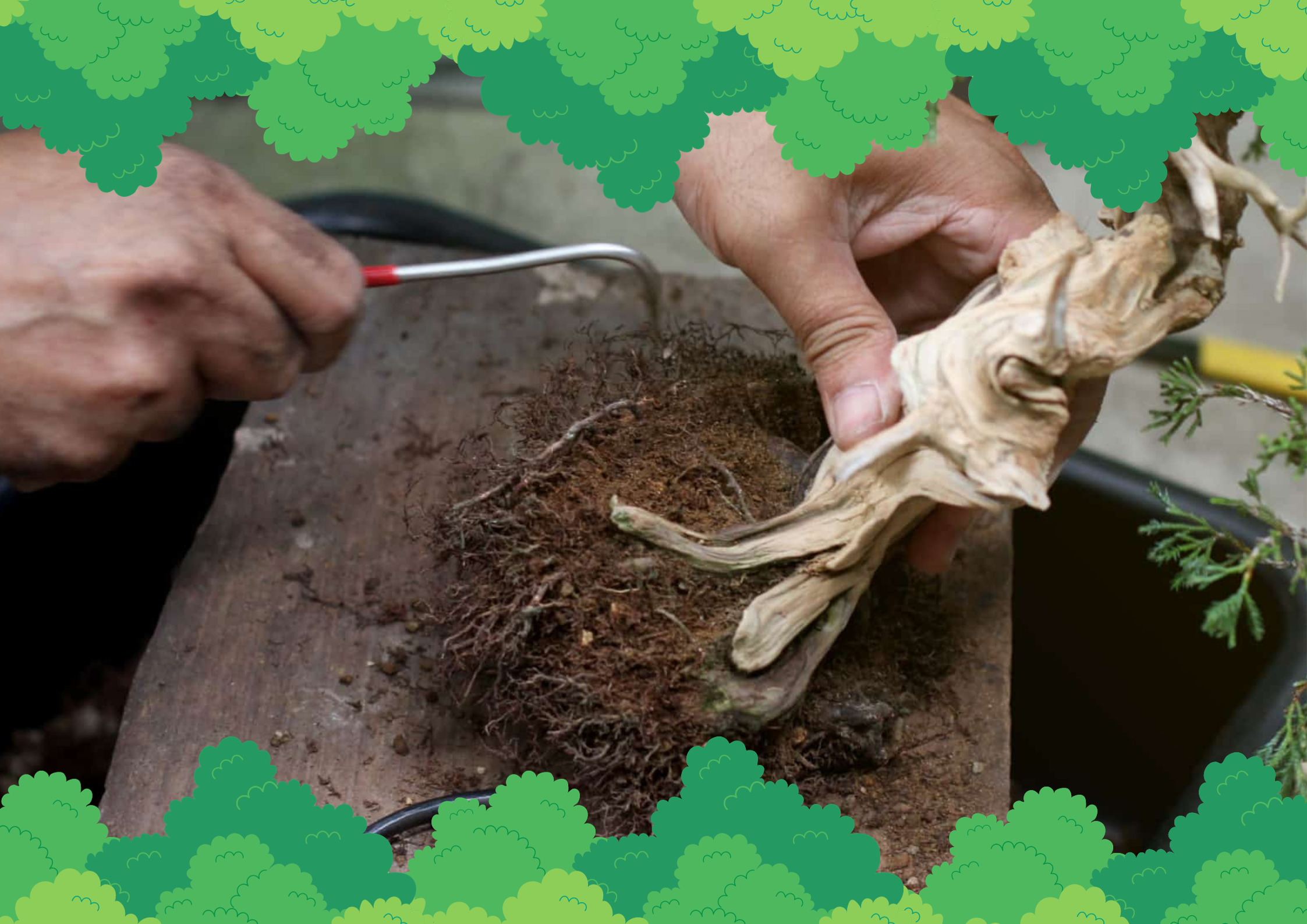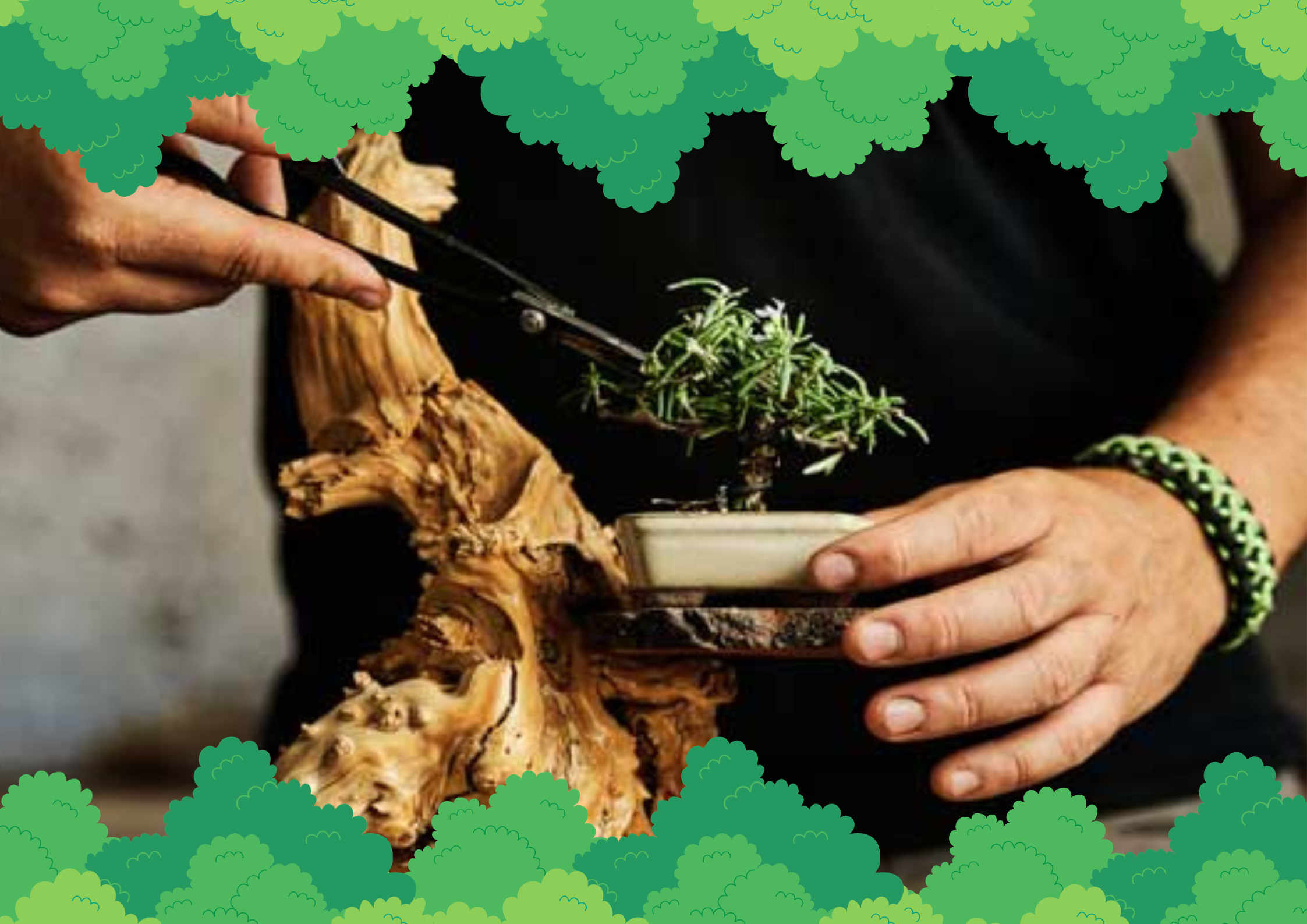HousePlantJoy is supported by our audience. When you purchase through one of our links, we may earn a small affiliate commission. As an Amazon Associate I earn from qualifying purchases. Your cost is not affected.
==================
Bonsai trees need shaping and pruning. But what about the root system? Should you include bonsai root trimming when re-potting? Or do the small containers keep those roots pruned without our help?
Bonsai, a traditional Japanese art form that has been practiced for centuries, involves cultivating miniature trees that mimic the shape and style of mature, full-size trees. A crucial aspect of bonsai cultivation is root trimming.
This procedure helps maintain the tree’s miniaturized state and promotes its health and aesthetics. This comprehensive guide explores the ins and outs of bonsai root pruning, providing invaluable insights for both novice and seasoned bonsai enthusiasts.
Credits: @grobonsai
The Rationale Behind Bonsai Root Trimming
Unlike other potted plants, Bonsai trees need their roots pruned periodically to maintain their miniature stature and overall health. As bonsai trees grow, their roots tend to colonize the entire pot, leaving little room for soil or water. This condition, known as being root-bound, can stress the tree. This leads to stunted growth and eventual death if not addressed. Root trimming helps prevent this condition, ensuring the tree remains vibrant and healthy.
Root Trimming for Growth Control
The primary reason for trimming bonsai roots is to control the tree’s growth. In natural settings, tree roots grow extensively, searching for nutrients and water. However, in a pot, the roots are confined, leading to a dense network of roots that can stress the plant. Regular root pruning helps manage this growth, ensuring the tree remains small and compact.
Root Trimming for Healthier Trees
Besides controlling growth, root pruning promotes a healthier tree. By trimming the roots, you stimulate the growth of many smaller, more efficient roots that are better at absorbing water and nutrients.
Furthermore, root pruning helps combat root-bound conditions, where the roots take up the entire pot, limiting space for soil and water.
In fact, one of the most important aspects of bonsai maintenance is root pruning, which helps the bonsai tree in several ways:
- It prevents the roots from becoming root-bound, filling up the entire pot and suffocating the tree. Root-bound trees have reduced water and nutrient uptake, and are more prone to diseases and pests.
- It enhances the aesthetic value of the bonsai tree by creating a good surface root structure (nebari), a sign of bonsai’s age and beauty. Nebari are the roots that spread evenly in all directions from the base of the trunk, creating a sense of stability and harmony.
Root pruning is a delicate and essential process that should be done with care and caution, using clean and sharp tools, and following the proper steps and timing for each species and situation.
Root pruning is usually done every couple of years, in late winter or early spring, before the tree starts budding. By trimming the bonsai roots, you help ensure the health and beauty of your bonsai tree for many years to come.
When to Trim Bonsai Roots
The frequency of root trimming depends on several factors, including the tree species, the pot size, and the growing conditions. However, general indicators suggest when a tree might need root trimming.
Observing Root Growth
Root pruning is necessary when you notice the roots have colonized the entire pot, a condition known as being root-bound. If left unchecked, this condition can lead to the tree drying out quickly, requiring multiple waterings in a day.
Noticing Symptoms of Decline
Another indicator that a tree might need root pruning is when it starts showing signs of decline, such as chlorosis, where the leaves start turning yellow. In such cases, root pruning can help revitalize the tree, leading to a flush of new growth.
Best Time for Bonsai Root Trimming
The best time to prune bonsai roots is during periods when the tree is under the least stress. This is typically during late fall or early spring for most bonsai species. During these periods, the tree enters or comes out of dormancy, making it the ideal time for root pruning.
Fall Root Pruning
Deciduous plants have stopped supplying leaves with moisture in late fall, while evergreens are entering dormancy. Despite this, the roots remain active, storing food for the winter. Root pruning during this period can stimulate a new flush of root growth before winter sets in.
Spring Root Pruning
Early spring is another ideal time for root pruning. With temperatures rising, both the top and root growth are about to kick into high gear. Root pruning during this period can stimulate new root growth while limiting top growth, reducing transpiration, and maintaining balance in the tree.
Tools for Bonsai Root Trimming
To prune bonsai roots effectively, you need the right tools. These include a root hook for untangling and straightening roots, a pair of bonsai root scissors for cutting finer roots, and a pair of root cutters for severing thicker roots. Having the right tools can make the pruning process easier and more efficient, minimizing damage to the tree.
The Root Hook
The root hook is essential for removing a bonsai tree from its pot and untangling its roots. It helps straighten the roots with minimal damage, making identifying which roots to trim easier.
Bonsai Root Scissors
Root scissors are used for cutting thinner roots. They have sharp blades that ensure clean cuts, which are critical for the tree’s recovery post-pruning.
Root Cutters
For thicker roots, a pair of root cutters is ideal. They apply a “pinch cut,” offering greater leverage when cutting thick roots. The key is to ensure a clean cut, minimizing the risk of infection and promoting faster healing.
How to Prune Bonsai Roots
Once you have the right tools, the process of trimming bonsai roots is straightforward. Start by removing the bonsai tree from its pot and use a root hook to untangle the roots. Brush away the soil to expose the roots, paying close attention to maintaining as many of the smaller, more efficient roots as possible.
Trimming the Taproot
The first time you prune your bonsai’s roots, you’ll need to cut down its taproot significantly. This primary root grows straight down and serves as the anchor for the tree in natural settings. However, in a bonsai pot, it can inhibit the growth of smaller, more efficient roots. Reducing the taproot encourages the growth of lateral roots and helps maintain the tree’s miniature form.
Pruning the Rest of the Roots
After addressing the taproot, move on to the rest of the roots. Remove any roots that are growing straight down, as they can hinder the overall growth and shape of the tree. Also, trim any roots that are crossing the radial emerging roots from the trunk. Try to keep as many of the fine roots as possible. They are more efficient at absorbing water and nutrients.
Post-Pruning Care for Bonsai Trees
After root pruning, it’s crucial to provide proper care to help the tree recover. Repot the tree in a suitable bonsai pot with fresh potting mix. Water the tree thoroughly immediately after repotting to help the roots adjust to their new size.
Selecting the Right Pot
When repotting your bonsai tree post-trimming, choosing the right pot is crucial. The pot should be large enough to accommodate the pruned roots without cramping them. It’s essential to be realistic about the pot size to avoid damaging the roots.
Watering and Fertilizing
Watering is a critical part of post-pruning care. Water your bonsai tree immediately after repotting to help the roots adjust to their new size. Also, fertilize the tree regularly to provide the necessary nutrients for recovery and growth.
Keeping Bonsai Root Systems Healthy
Root pruning is a crucial aspect of bonsai cultivation. It helps maintain the tree’s miniature stature, promotes its health, and enhances its aesthetic appeal. With the right tools and techniques to effectively prune your bonsai’s roots, you help ensure that it thrives in its pot for years to come. Now, you’re equipped with all the essential information for bonsai root trimming. Happy trimming!
FAQs
When is the best time to trim bonsai roots?
Trim bonsai roots during late winter or early spring. This is when trees are dormant and can recover best.
How often should bonsai roots be trimmed?
Generally, trim roots every two to three years. This varies with tree species and growth rate.
What tools are needed for root trimming?
Use sharp scissors or bonsai shears. Ensure they’re clean to prevent disease spread.
Can I trim the roots of any bonsai?
Most bonsai tolerate root trimming, but research your specific tree type. Some species have special requirements.
What should I do after trimming the roots?
After trimming, repot the bonsai in fresh soil. Water it thoroughly and provide proper aftercare.
Learn More About Houseplants!
Discover more types of houseplants, their benefits, and how to care for them with us! Join us on Facebook, Instagram, and Twitter for beautiful photos, plant care tips, and a community that celebrates the joy of indoor gardening.
Facebook: https://www.facebook.com/houseplantjoyblog
Instagram: http://instagram.com/houseplantjoy20
Twitter: https://twitter.com/HouseplantJoy
Let’s nurture our green spaces together!


